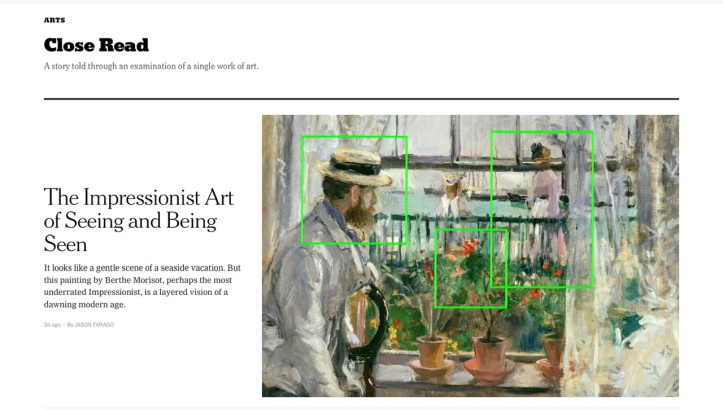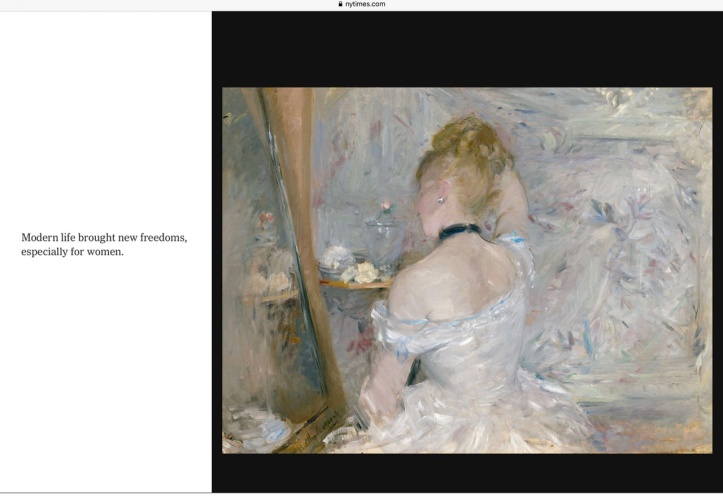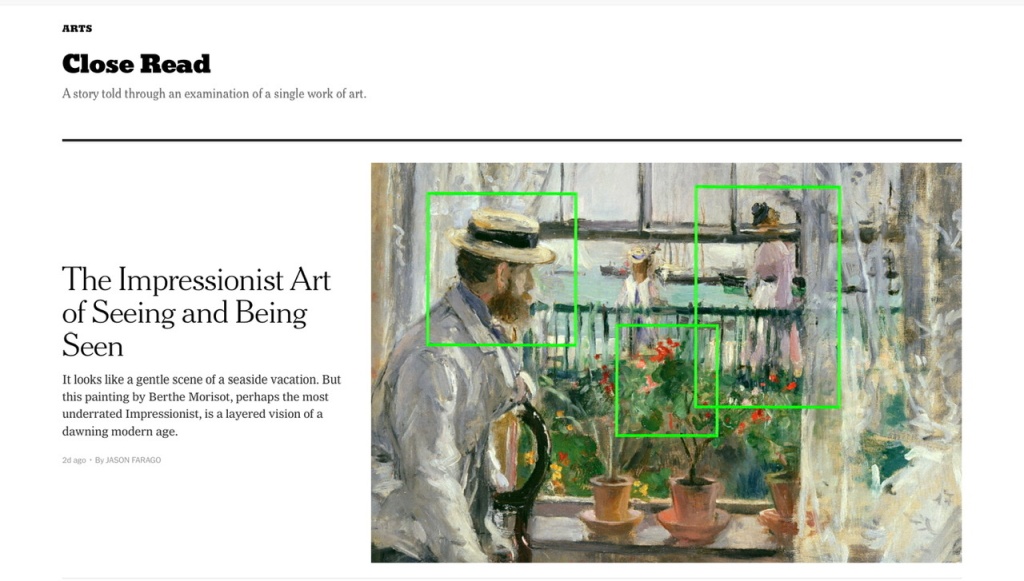
Seldom have I enjoyed an art critique post, visually or intellectually, as much as I enjoyed this visually detailed, historically grounded narrative into “some” of what the Impressionist movement was about, even if not apparent at the time – ie, much like our own times will need some reflection and commentary to become more fully fleshed out.
Much like we are in the moments of our own times, such was the case of the Impressionists, and in this particular case, my own favorite (among several) female painter of the time, Berthe Morisot.
I’ve read several narratives of her life and picture books of her works, and, once seeing her work, at the Kimbell in Fort Worth (early 1970s) and the MFA in Houston (1980) and Paris (2012) have always admired and loved her freely moving brush strokes of light, and the author does a brilliant job illustrating that it —
Look at how she renders the windowpanes. A century earlier, these would have been crystalline. Hers are brushy and opaque, little fugues of active composition.
https://www.nytimes.com/interactive/2021/06/04/arts/design/berthe-morisot-in-england.html
…
You see that here, too, in the hotel room’s curtain. She captures its translucence through thick slashes and backslashes. It’s a tour de force of open white brushwork, blocking almost a third of the canvas.
That she painted what she had access to, both in topic and geographically, as is discussed in the article, is somewhat a given for most of us that work representationally to any degree. The author, Jason Farago, though, does a good job connecting her times to her themes, including being a female artist, with the time’s restrictions upon her. The article does a superb job illustrating Jason’s ideas and Berthe’s style and technique.
Though I quibble a bit on points I know nothing about except what I’ve read in books, like maybe (I think) some of Berthe’s possible moments of melancholy in her work aren’t just of being and living the position of a woman of her times but also of being married to the brother of the man she may well have preferred to be married to. Still, the historical connections and challenges of changes in leisure (esp along the seashore) seem spot on.
Through a very detailed viewing of one of Berthe’s images, particularly how her visual structure in the painting featured, and her painting/brush style, and how both exemplified the ambiguity of the technological and economic changes happening around her – I could feel a connection to her art I hadn’t been as aware of, including the flattening of the depths of fields in the featured work.
Something funny is happening, here, at the border of inside and outside. Morisot has made the hotel interior disorientingly indistinct from the garden and the quay.
https://www.nytimes.com/interactive/2021/06/04/arts/design/berthe-morisot-in-england.html
And other work is shown too. Including from other artists.
If nothing else, the visual treats are sumptuous, while the words while sparse, intrigued me to contemplation, reminding me of times over the decades when I viewed her work live, and felt that undeniable twinge of wanting to express myself that purely, that cleanly, that magically.

Regardless of her times, and regardless of my own, within all the permutations of technological and social class changes, regardless of any other differences I’m not even aware of, something of her sensuality, especially seen live, cuts through all of it and again – makes an imprint upon me….
Jason’s article reminded me of that ♥️
Adan
ps – this NYTimes article is part of a series of theirs, “Close Read” described as “A story told through an examination of a single work of art” 😊
https://www.nytimes.com/column/close-read
My Related Blog Posts
*
My Related Amazon Affiliate Search Products
https://www.amazon.com/shop/felipeadanlerma
My Amazon search for “Berthe Morisot” –
https://amzn.to/2T7zzgX
*

Twitter / Instagram / FB @FelipeAdanLerma
Amazon Author Page – https://amzn.to/2YpgyUf
Fine Art America (FAA, Pixels) – https://felipeadan-lerma.pixels.com/

Leave a comment